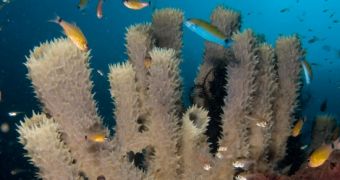Marine biologists were surprised to discover that marine creatures living along shorelines, and especially invertebrates, appear to prefer living in waters that flow at high speeds. Wherever there are fast-moving flows, researchers can find the highest level of invertebrate biodiversity.
The correlation was observed some time ago, but this is the most complex study on the issue carried on to date. Experts conducted surveys of areas in Alaska and in Maine, and even manipulated the water flow at some locations to tease out the connection.
Their final conclusion was that invertebrates including soft corals, barnacles. sponges, and sea anemones were a lot more likely to congregate on rocks that were located directly underneath the area where waves broke on the shore.
The field research was conducted by investigators at the Brown University, who were led by professor of ecology and environmental biology Jon Witman. He says that the same connection was found in Alaska and in Maine.
“It totally blew us away that we got almost identical results in two marine regions of the world separated by 4,000 miles with completely different regional diversities, and no species shared in common,” Witman explains.
“It's a wake-up call saying that water flow is a really strong predictor of how many species are present in a particular area of the ocean,” he goes on to say, quoted by Our Amazing Planet.
Working together with former Brown PhD student and research team member James Palardy, Witman set up a simple experiment to see if the correlation between the level of biodiversity in an area and the local speed of water was there.
The team constructed 2-meter (7-foot) long and 46-centimeter-high channels in the water. On their walls, they placed plants that marine invertebrates generally tend to cling on to. In some of the channels, a bottleneck was added at some point, to increase water flow speed.
In some channels the width was maintained constant. This was done so that the second group of channels could be used as a reference and a control for the test channels. All structures were left submerged at locations in the two states for a whole year, and were constantly monitored.
When the scientists returned to the studied areas, they discovered significantly higher levels of biodiversity in the test channels than in the control ones. The new conclusions could have important implications for conservation efforts.
“There's a global biodiversity crisis where we're losing species. Ecology is very much concerned with sustaining natural processes,” Witmann explains. A study detailing the findings appears in the November 15 issue of the esteemed scientific journal Ecology Letters.

 14 DAY TRIAL //
14 DAY TRIAL //